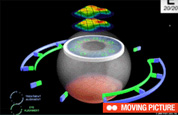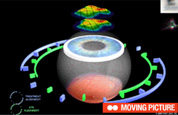- Consultation Item
LASEK
What is LASEK (Laser Epithelial Keratomileusis)?
This is a new surgical operation technique that combines the advantages and supplements the weaknesses of PRK (Eximer Laser Operation) and LASIK. As with LASIK, LASEK applies laser to incise and flatten the center of the cornea. The cornea is incised as much as the patient’s refractive error to obtain the desired vision correction.
The Greatest Advantages of LASEK
Laser is applied on the outer side of the cornea. Therefore, LASEK provides the advantage of safe operation in case LASIK cannot be administered due to too thin cornea. LASEK also enables effective vision correction in cases where the LASIK device (microkeratome) cannot be used owing to too small eyes and also befits patients with occupations or activities that may exert impact on the eyes.
LASEK Operation Procedures
- 1
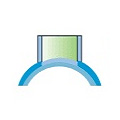
- Punching with a circular blade as much as the thickness of the epithelial cell to be separated.
- 2
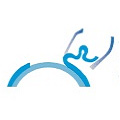
- Folding the separated epithelial cell to one side.
- 3
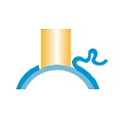
- Applying laser.
- 4
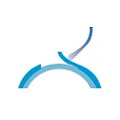
- Attaching the folded epithelial cell to the original position.
- 5
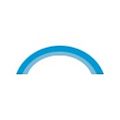
- After operation.
What is M LASEK?
M LASEK | Operation Procedures
Operation procedures of M LASEK are the same as those of LASEK. There is only an additional process of having the eyes in contact with a drug for approximately 30 seconds ~ 2 minutes after laser application.
LASIK
LASIK vs LASEK
A LASIK procedure corrects patients’ vision by cutting a flap from the eye surface, and radiating laser on the exposed cornea.
A LASEK procedure corrects patient's vision by lifting the epithelial layer from the eye's surface and radiating laser on the cornea.
The major advantage of LASIK is that there is almost zero discomfort after the surgery, plus healing is much faster than LASEK. On the other hand, patients who have LASEK experience pain, and it usually takes 3 to 5 days to heal completely. However, with LASEK, the post-op remaining corneal thickness is greater than what is obtained with LASIK, and it is available to patients who cannot have LASIK.
One procedure does not top the other one, so it is important to choose a more suitable procedure with regard to one’s vision, corneal thickness, size of pupils, occupation, and lifestyle. Seran Eye Center has the most precise testing system to provide the optimal vision correction surgery to our patients
What is ALL-Laser LASIK?
It is a safer and more precise form of LASIK where all procedures are done using laser and laser ONLY. On contrary, conventional LASIK involved procedure where metal blade were used in which most LASIK-related intraoperative complication occurs.
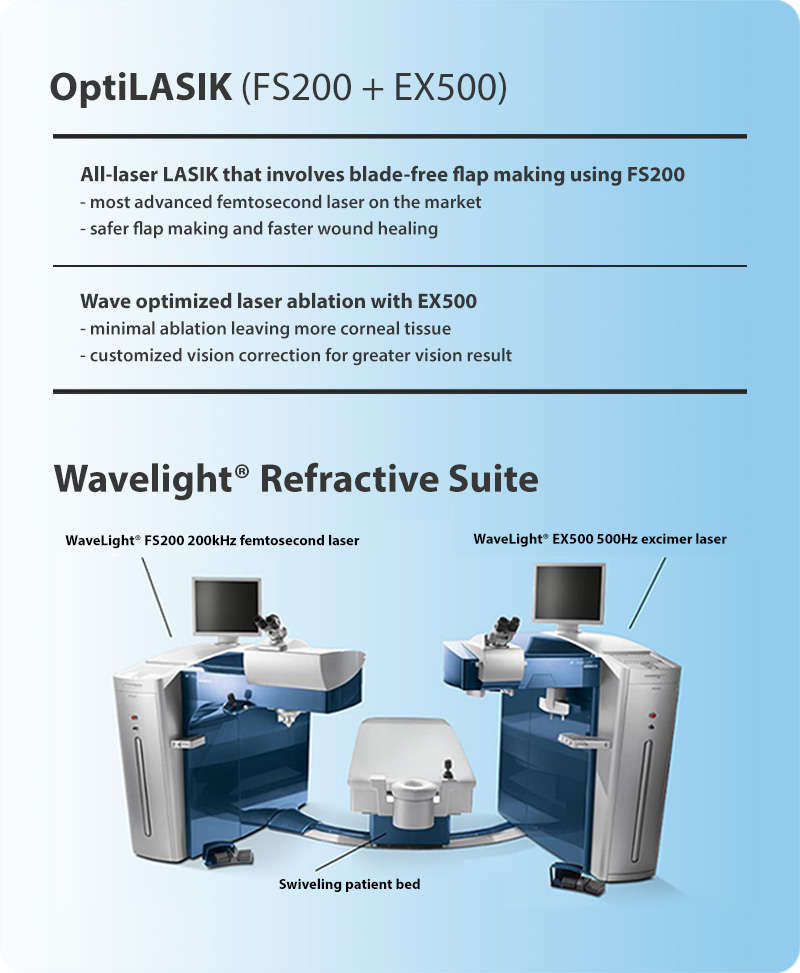
LASIK Technique
This latest surgical operation technique does not involve pain and require hospitalization of the patient. Check our operation procedures in advance.
- 1
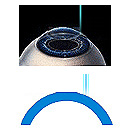
- Creating corneal flap with “blade-free” FS200 femtosecond laser
- 2
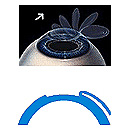
- Pulling back the corneal flap.
- 3
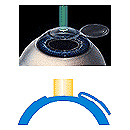
- Applying laser to adjust abnormal refraction.
- 4
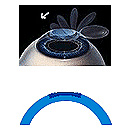
- Placing the pulled-back corneal flap back in position.
LASIK Patients
Laser operation can be administered on persons aged 18 or higher and with near-sightedness, far-sightedness or astigmatism who are experiencing difficulties in or not satisfied with wearing glasses or contact lens.
- 1

- Examination and consultation/ Preparing for surgery.
- 2

- Confirming the date of surgery.(Reservation by phone and same day operation possible)
- 3

- Surgical correction requires 5 ~ 10 minutes per eye.
- 4

- Examining the results/ Make sure to observe the doctor’s instructions!
- 5

- Regular checkup for 6 months.
Learn more about OptiLASIK procedure
Procedure before surgery
Preoperative Patients wearing soft contact lenses typically are instructed to stop wearing them approximately 6 to 7 days before surgery. One industry body recommends that patients wearing hard contact lenses should stop wearing them for a minimum of three weeks. Before the surgery, the patient’s corneas are examined with a pachymeter to determine their thickness, and with a topographer to measure their surface contour. Using low-power lasers, a topographer creates a topographic map of the cornea. This process also detects astigmatism and other irregularities in the shape of the cornea. Using this information, the surgeon calculates the amount and locations of corneal tissue to be removed during the operation. The patient typically is prescribed an antibiotic to start taking beforehand, to minimize the risk of infection after the procedure.
Opti LASIK Operation Procedures
 To best understand the benefits of OptiLASIK, it’s important to know that LASIK is a two-step process. During the first step, the eye surgeon creates a flap in the protective covering of the cornea. In step two, an excimer laser is used to reshape the cornea and correct vision errors.
Blade free OPTiLASIK is a computer-controlled procedure that combines flap making with FS200 femtosecond laser and reshaping of cornea to correct vision errors with EX500 excimer laser.
To best understand the benefits of OptiLASIK, it’s important to know that LASIK is a two-step process. During the first step, the eye surgeon creates a flap in the protective covering of the cornea. In step two, an excimer laser is used to reshape the cornea and correct vision errors.
Blade free OPTiLASIK is a computer-controlled procedure that combines flap making with FS200 femtosecond laser and reshaping of cornea to correct vision errors with EX500 excimer laser.
For decades, doctors have used a hand-held surgical instrument called a microkeratome to create the flap. While the results have been excellent, there was also room for a margin of error.
Opti LASIK is a computer-controlled procedure. Opti LASIK creates a flap with uniform thickness and design every single time, reducing potential blade-related complications and further lowering any risk of infection. Opti LASIK allows a wider range of candidates to qualify for the surgery because having thinner corneas or a higher degree of prescription error is no longer a concern.
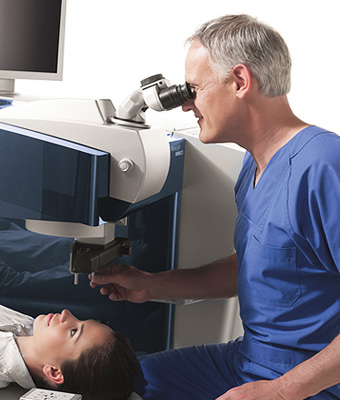 Opti LASIK uses a cool beam of light from the excimer laser to gently reshape the front surface (cornea) of your eye.
Opti LASIK uses a cool beam of light from the excimer laser to gently reshape the front surface (cornea) of your eye.
The laser vaporizes tissue in a finely controlled manner without damaging adjacent stroma by releasing the molecular bonds that hold the cells together. No burning with heat or actual cutting is required to ablate the tissue. The layers of tissue removed are tens of micrometers thick. Performing the laser ablation in the deeper corneal stroma typically provides for more rapid visual recovery and less pain (than the earlier PRK).
Currently manufactured excimer lasers use an eye tracking system that follows the patient’s eye position up to 4,000 times per second, redirecting laser pulses for precise placement within the treatment zone. The energy of each pulse is usually in the milliwatt range Typically, each pulse is on the order of 10-20 nanoseconds. After the laser has reshaped the stromal layer, the LASIK flap is carefully repositioned over the treatment area by the surgeon, and checked for the presence of air bubbles, debris, and proper fit on the eye. The flap remains in position by natural adhesion until healing is completed.
Postoperative
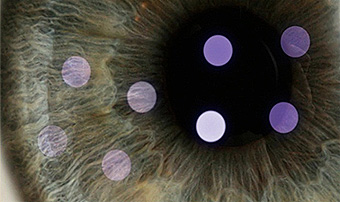 Patients are usually given a course of antibiotic and anti-inflammatory eye drops. These are discontinued in the weeks following surgery. Patients are also given a darkened pair of goggles to protect their eyes from bright lights and protective shields to prevent rubbing of the eyes when asleep.
Patients are usually given a course of antibiotic and anti-inflammatory eye drops. These are discontinued in the weeks following surgery. Patients are also given a darkened pair of goggles to protect their eyes from bright lights and protective shields to prevent rubbing of the eyes when asleep.
Artisan Lens
What is Artisan Lens?
Artisan lens, as of ICL, is a type of artificial implantable lens. The lens designed after the shape of a lobster claw is stably placed on the iris, which functions as the iris diaphragm in the eyes, to correct the vision.
Artisan Lens Technique
- 1
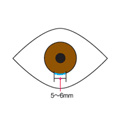
- Incision by 5 ~ 6mm according to the size of lens.
- 2
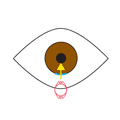
- Implanting lens through the incised cornea.
- 3
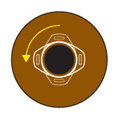
- Rotating to fix the implanted lens in position.
- 4
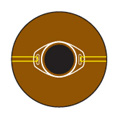
- Fixing lens on the iris with iris fixation needle.
- Anesthetic is administered by placing miotic eyedrops into the eye.
- A small hole is made on the white conjunctiva. Anesthetic is administered by using a tool called Pin-point.
- The cornea is incised by approximately 6mm and the lens is vertically implanted.
- Position of Artisan lens is adjusted for stable fixation according to the eyesight so that the lens is placed at the most suitable position on the iris.
- Using the rings at the both ends of the lens, the lens is fixed in position on the iris and the incised cornea is sutured.
Artiflex Lens
What is Artiflex Lens?
Artiflex is a compound word of ‘Arti’ from Artisan lens and ‘flex’ of flexible. While the functions are the same as those of Artisan lens, Artiflex lens is made of foldable materials, therefore can be implanted through smaller incision than that required for Artisan lens implantation.
Artisan Lens Technique
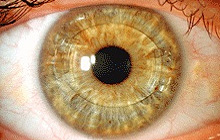
- Artiflex lens inserted
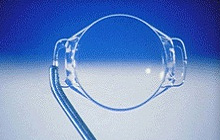
- Artiflex lens
ICL
What is Implantable Contact Lens (ICL)?
Implantable Contact Lens (ICL) is very safe to human body as this is a special lens made of the highly biocompatible collamer that does not cause inflammations in the eyes.
Artisan Lens Technique
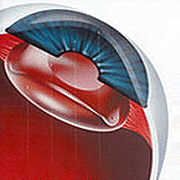
- Position of ICL implantation
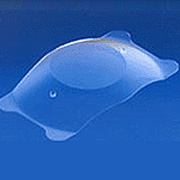
- Front view of ICL
ICL operation corrects the vision by implanting the lens specially designed for implantation in between the crystalline lens and the iris. This operation is safe as it uses the special lens made of the highly biocompatible collamer.
Cataracts
What are the Cataracts?
Cataract is a clouding that develops in the crystalline lens of the eye, and leads to vision impairment. It usually appears around the late 40s. Fifty percent of people in their 60s and 70% of people in their 70s suffer from cataract. Cataract surgery is very common, though, and has a success rate of more than 95%, so patients need not worry about its safety. Moreover, local anesthesia is applied to the eye area only, so the surgery is completed in 20 minutes! Also, surgery using ultrasound leaves no physical injury, so patients can return to their daily life right after the surgery!
Safe microincisonal cataracts surgery using ultrasonic waves
Comparison with the Conventional Operation Techniques
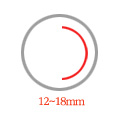
- Before 1990
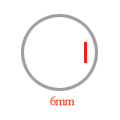
- Phacoemulsification
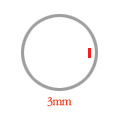
- Development of pliable artificial intraocular lens(1995)
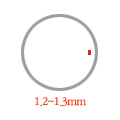
- Cataracts surgery by microincision (present)
Comparison with the Conventional Operation Techniques
Phacoemulsification is the method to emulsify or liquefy the clouded crystalline lens with ultrasonic energy. The emulsified crystalline lens is then sucked out and removed. Phacoemulsification can be safely administered only by making a small hole. This also has a very high success rate and minimizes the occurrence of complications. Therefore, patients can return to everyday life immediately (even on the same day) after operation.
The surgical treatment fields for cataracts have been achieving remarkable advancement in the last several decades to record the success rate of 95% or higher in the present times. Cataracts surgery is administered mainly by local anesthesia on the eye Regarding surgery time, it generally requires less than 30 minutes to complete the entire procedures. Thus there is absolutely no physical damage to patients during surgery.
Multifocal Artificial Intraocular Lens (Toric, ReSTOR, Tecnics, ReZoom)
Multifocal artificial intraocular lenses (Toric, ReSTOR, Tecnics, ReZoom) have been developed for cataracts surgery to enable patients to see both long and close ranges without wearing glasses. According to a clinical test result reported by FDA, 80% or more of patients could carry out everyday activities without the help of glasses after the surgery. Seran Eye Center was the first in Korea to introduce the multifocal artificial intraocular lens and has been carrying out the largest number of surgical operations with it thus far.
IR Wavefront
What is IR Wavefront?
IR is the system that enables high-resolution Wavefront operation to be administered more safely and accurately as movements of the eyeball are traced and automatically followed by laser even when the patient unconsciously moves the eyeball during surgical operation.
IR technology not only follows the up-down and left-right movements of the eyeball possible to occur during a surgical operation, but also completely captures rotation of the eye, which had been difficult to achieve with the conventional laser equipments. This is a laser operation system equipped with an automatic positioning device. Also, IR enables correction of errors caused by differences in the sizes and positions of the pupils.
Difference between LASIK and Wavefront LASIK
LASIK has been upgraded into Wavefront LASIK!
Wavefront technology enables correction of irregular astigmatism and aberration!
- Wavefront enables to improve eyesight to be higher than the corrected vision prior to operation. Also, the problems of night glare and lowered clarity, the most common side effects of LASIK, are mitigated to improve the quality of eyesight.
- Operation can be administered even in cases where surgical operations with the conventional methods are not applicable due to unevenness of the corneal surface. Also, this technology is anticipated to enable correction of the irregular astigmatism of various types that has been occurring after eximer laser surgery in the past.
Operation Procedures
- Reception & Explanation
- Accurate and detailed examination for satisfactory results

- General Examination Consisting of 18 Steps
- Patients unacceptable for surgical operation are sorted out by automatic refraction test, intraocular pressure test, topography test (ORB Scan), measurement of pupil size, field of vision test, measurement of cornea thickness and digital angiography, etc. Through this multi-step examination, the most effective and safest method for the patient is selected.

- Wavefront Test
- In addition to the cornea, information on the structure of the eyeball as well as abnormalities in refraction of the entire eyeball that varies per individual are accurately examined and analyzed. Then, the results are fed into the laser machine to achieve vision correction of the genuine sense.

- Customized Wavefront Vision Correction
- With the information from aberration analysis test, active eye tracker, the 3D automatic eyeball tracing device, and the high-tech laser equipments are used to administer precision Wavefront operation.

- Final Vision Test
- Through the accurate and effective customized Wavefront vision correction offering the highest level of safety in surgical operation, patients will obtain the desired results and the greatest satisfaction.

